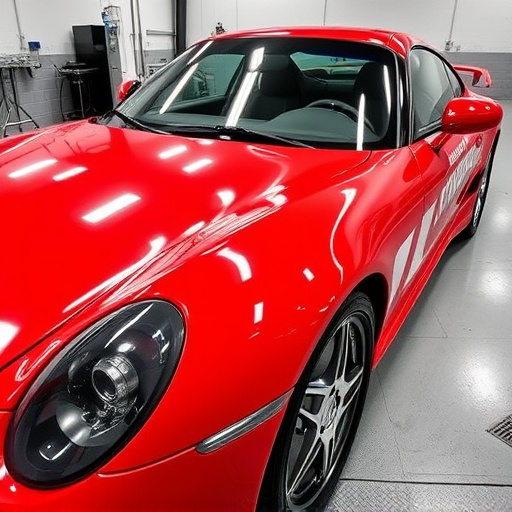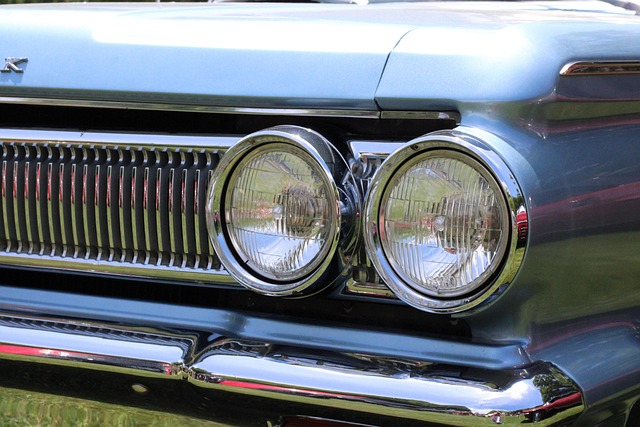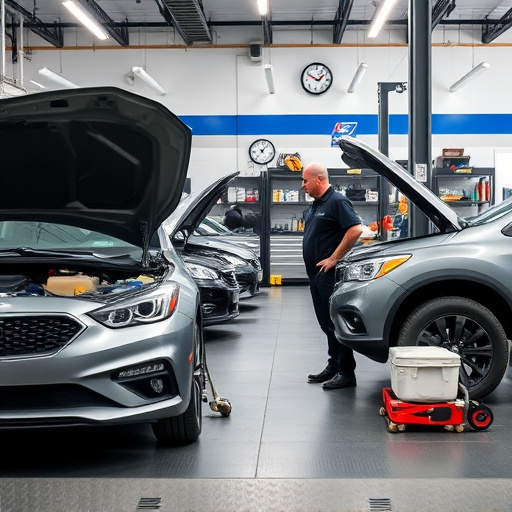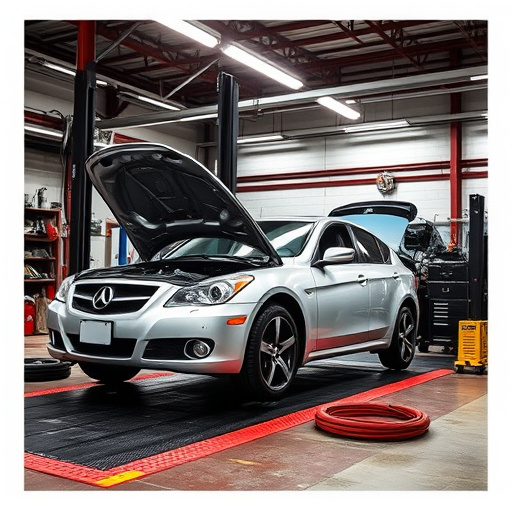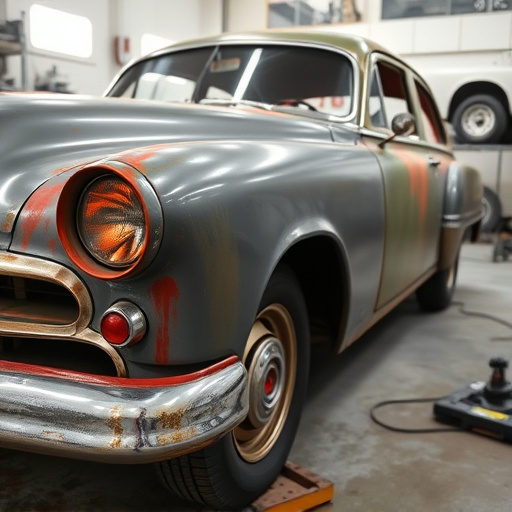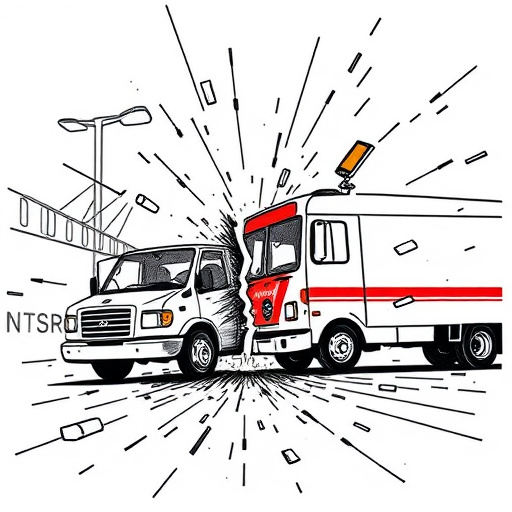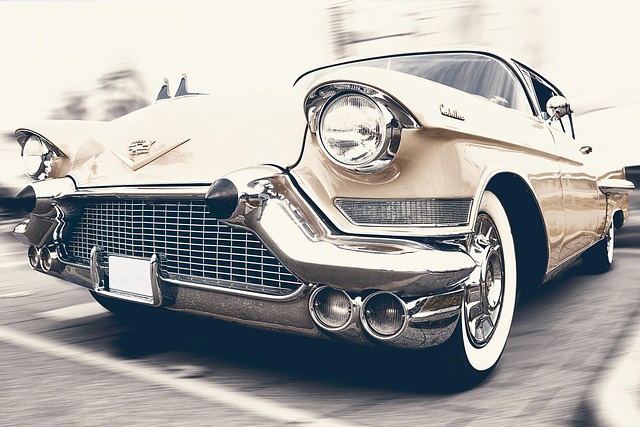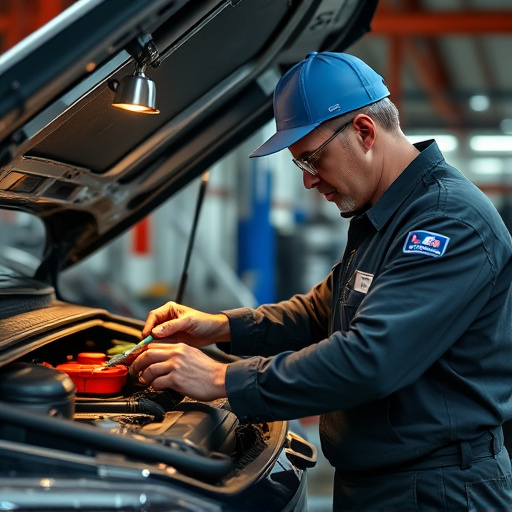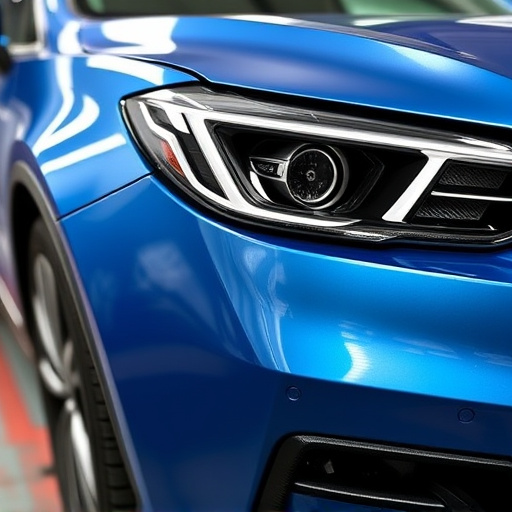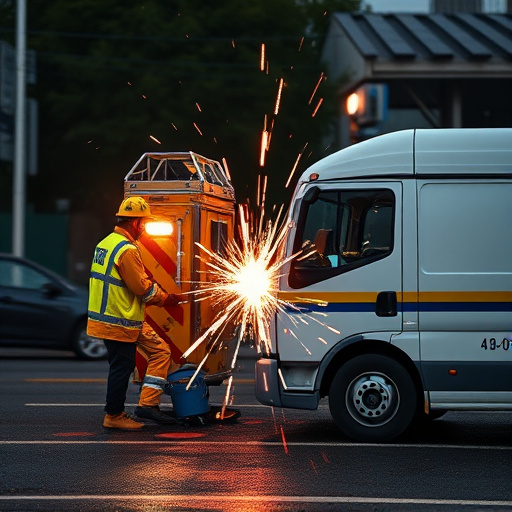The Tesla LED Daytime Running Light (DRL) system, vital for safety and legal compliance, can face issues like filament burn-out or circuit malfunctions. Common problems include failure to activate or stay on after ignition off. Regular repair by specialized Tesla vehicle centers is crucial. For post-collision or age-related failures, a straightforward repair process involves parking safely, accessing the DRL module, inspecting for damage and testing connections, replacing faulty parts from trusted suppliers, reassembling, retesting, and conducting a post-repair test drive during daylight hours to ensure optimal functionality.
Tesla’s LED Daytime Running Lights (DRLs) enhance visibility and safety on the road. However, issues with activation can be frustrating. This guide delves into the understanding of the complex LED DRL system, identifies common problems like faulty sensors or wiring damage, and provides a step-by-step repair process for DIY enthusiasts or mechanics. By following this meticulous approach, you’ll ensure your Tesla’s DRLs activate correctly, improving both safety and aesthetics. Master this repair, and your Tesla will shine brighter than ever on the highway.
- Understanding Tesla LED Daytime Running Light System
- Identifying Common DRL Activation Issues
- Step-by-Step Guide to Repair and Proper Activation
Understanding Tesla LED Daytime Running Light System
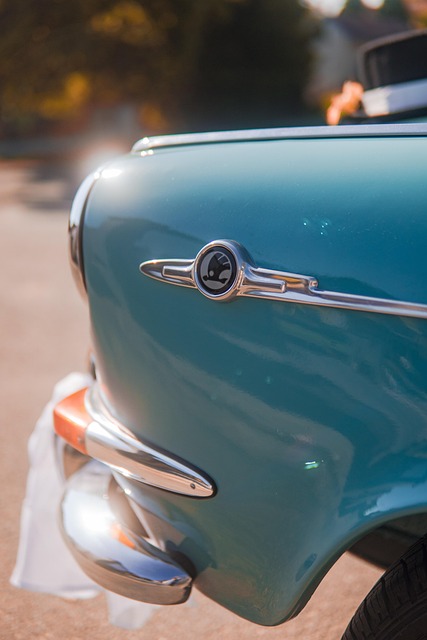
The Tesla LED Daytime Running Light (DRL) system is a sophisticated feature designed to enhance visibility and safety while driving during daylight hours. This cutting-edge technology utilizes advanced LEDs that provide a distinct, bright light beam, making your vehicle more visible to other drivers. The DRLs are strategically placed at the front of the car, automatically activating when certain conditions are met, such as low ambient light or when the vehicle is in motion.
Proper functioning of this system is crucial for optimal driver safety and legal compliance. Over time, various factors can contribute to issues with Tesla LED DRL activation, including filament burn-out, circuit malfunctions, or even damage during a collision or auto body shop repairs. When problems arise, seeking professional assistance from a reputable vehicle repair center specializing in Tesla models is recommended. They can diagnose and address the issue, ensuring your DRLs are repaired or replaced correctly, thereby restoring proper lighting functionality for enhanced driver safety.
Identifying Common DRL Activation Issues

Many Tesla owners often take their vehicle’s LED daytime running lights (DRLs) for granted until they start experiencing issues with activation. Common problems can include DRLs that fail to turn on automatically at sunrise or remain illuminated after turning off the ignition, leading to a less-than-ideal driving experience and potential safety hazards. Sometimes, these issues stem from simple causes like a loose connection or faulty sensor, while other times they may require more intricate diagnosis and repair, such as those involving the vehicle’s electrical system or software.
A Tesla LED daytime running light repair is often necessary when these problems persist. Visiting a reputable collision repair shop or auto body shop with specialized expertise in electric vehicles can help pinpoint the root cause of the issue. They use advanced diagnostic tools to analyze electrical circuits, sensors, and software, ensuring that your DRLs function correctly and safely on the road, enhancing both your driving experience and vehicle reliability.
Step-by-Step Guide to Repair and Proper Activation
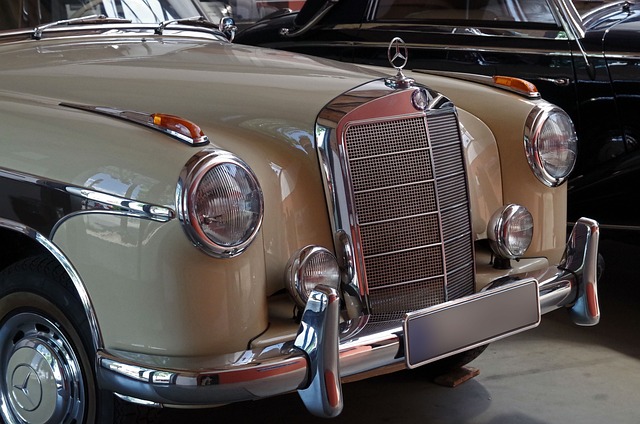
The Tesla LED daytime running light (DRL) system is a sophisticated feature that enhances visibility on the road. However, after a vehicle collision or over time, this system might malfunction, leading to improper DRL activation. Fortunately, performing a Tesla LED DRL repair is relatively straightforward and can be accomplished in several simple steps.
Here’s a step-by-step guide:
1. Safety First: Ensure your vehicle is parked on a level surface with the engine off. Put on safety gear, especially gloves, to protect against any sharp edges or debris during disassembly.
2. Accessing the DRL Module: Locate the DRL module, usually found near the front of the vehicle under the bonnet (hood). Some models may have access panels or covers that need removal for easy access.
3. Inspect and Test: Carefully inspect the module for any visible damage. Use a multimeter to test the electrical connections and LEDs, ensuring they’re functioning properly. This step is crucial in identifying the issue.
4. Replacement (if necessary): If any component is damaged or faulty, replace it with a new one from a trusted supplier. Ensure compatibility with your Tesla model.
5. Reassemble: Put back all panels and components, ensuring everything is securely fastened. Test the DRL again to confirm proper activation.
6. Post-Repair Testing: Drive the vehicle at different speeds during daylight hours to ensure consistent and correct DRL functionality. A test drive is vital to verify that your Tesla’s daytime running lights are working as expected.
Repairing your Tesla’s LED Daytime Running Lights (DRLs) is a straightforward process that can be accomplished with a few basic tools. By understanding the system and identifying common activation issues, you can ensure proper DRL functionality, enhancing safety and visibility on the road. This guide provides a step-by-step approach to troubleshooting and repairing any DRL problems, allowing you to get back to driving confidently with fully operational lights. Remember, a well-maintained Tesla is a safer Tesla, and properly functioning daytime running lights play a crucial role in making your vehicle visible during daylight hours.
